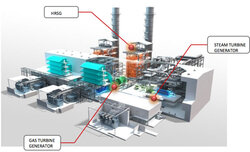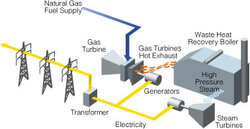Doug MacIVER
Minister of Fire
interesting read. don't know how truthful maybe someone here can cut through the weeds http://www.investors.com/politics/perspective/can-we-afford-free-wind-and-solar-energy/
interesting read. don't know how truthful maybe someone here can cut through the weeds http://www.investors.com/politics/perspective/can-we-afford-free-wind-and-solar-energy/
Its pretty much always somewhere and we do have an distribution grid in place.His points are valid. That is the difficulty of wind...it is very localized and it's not always there.
That is the difficulty of wind...it is very localized and it's not always there. When there is too much wind, you have to use massive brakes to slow down the speed of the turbine. This causes heat and can catch the gearbox/turbine on fire...and you lose energy.
Its pretty much always somewhere and we do have an distribution grid in place.
Many power plants import their fuel from somewhere distant. What's better: generating locally and transmitting power by wire elsewhere or transporting fuels to more local power plants?
Admittedly I don't know the answer.
I do know that energy gets transported around whether as fuel or electricity and there's costs associated with that.


Point well made.Sadly, the politics of "let's get more wind power" ignores the reality that it may be causing more pollution, not less.

We don’t have a constant demand, so this idea that we need a constant supply is a myth.”
Good insights from everyone here. This is a great discussion.
The author is a prolific conservative writer who often defends corporate interests in biotech, energy health. What he does visit in this article is the quid pro quo of fossil fuel and ethanol subsidies that wind and solar power are up against. I got turned off when I read "Obama's DOE". That is partisan tripe.
There is a very well funded effort and campaign to kill alternative energy programs spearheaded by the Koch brothers and some utilities. Most recent is the ridiculous solar amendment on the floor in Florida.
In reality this is an effort to destroy net metering in the state. The amendment is now in the hands of the Florida Supreme Court due to deceptive language in it. Counterpoint article here:
http://www.motherjones.com/environment/2016/03/florida-solar-amendment-utility-companies-electricity
Outback (and others) has some very powerful software control of their off grid systems. I believe they have an operating mode that does what you describe. Essentially it is a standard off grid control mode with an import from utility if the state of charge (SOC) of the storage media drops below a minimum setpoint. If the system is not connected to the grid its the same setpoint that would turn on the generator. I expect they also have an export to utility function if the batteries are fully charged and grid is available. In an off grid scenario, the system can turn on "opportunity loads" if the SOC exceeds a setpoint. Unlike grid tied inverters that are designed to be plug and play and "dumb" , off grid gear is designed to be quite flexible. The trade off is set up is far more complicated and is essentially custom for each install. The Outback equipment is modular with a central control bus so different configurations of hardware are controlled by the same integrated logic. There is substantial upcharge for the battery bank and extra electronics plus the PV array has to be configured differently although the high voltage Schneider system is capable of high voltage strings.I haven't seen a control system for home solar PV that would automatically shunt excess power to storage when PV output exceeds house demand, and then draw from storage when house demand exceeds PV output.
Anyone know offhand how efficient this method of storage is?hydro installation in Norway for grid stabilization

